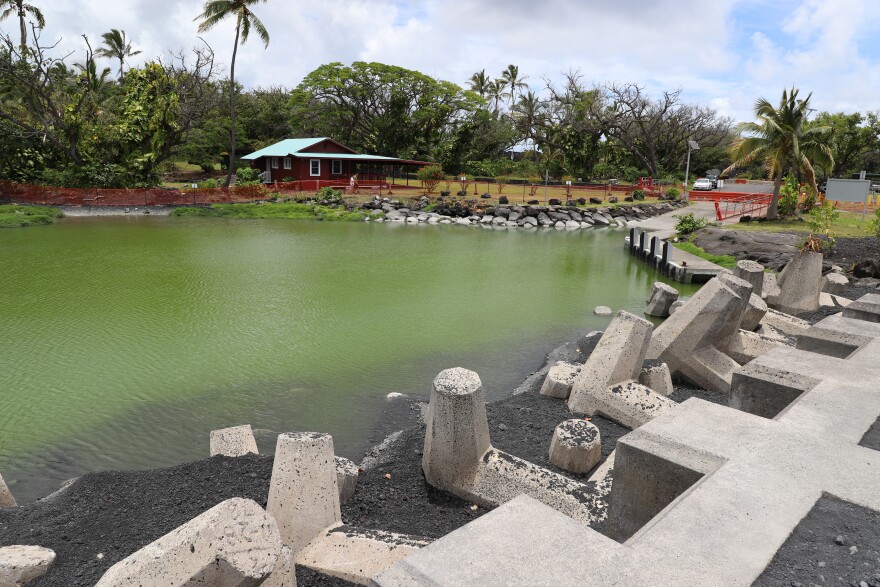The state Department of Land and Natural Resources' Division of Boating and Ocean Recreation has begun removing 42,000 cubic yards — about the size of 42,000 large refrigerators — of volcanic debris deposited by the 2018 eruption of Kīlauea at Hawaiʻi Island’s Pohoiki Bay.
This is the largest dredging job ever for DOBOR. And for two weeks, crews from the contractor, Goodfellow Bros, have made progress using heavy equipment to scoop large buckets of black sand, rocks and boulders to clear the boat ramp at Pohoiki.
The required completion date of next February is now expected for November, according to DOBOR Engineer Finn McCall.

“I mean I’m absolutely blown away. I was not expecting them to get this far. I’d say they’re about halfway done with the excavation portion of the project. So, it’s looking really good. Looking like we may be done ahead of schedule,” McCall said.
Once the inner basin is cleared, a crane will be brought in to make an entrance that will be approximately 320 feet wide, he added.
Pohoiki’s boat ramp had served the fishing community in Puna before it was blocked. Since then, boats have had to launch from the Wailoa Small Boat Harbor in Hilo, about 32 miles away.
Several small commercial fishing operations were negatively impacted by this and reportedly went out of business during the blockage.
Most harbors need to be dredged every seven or eight years, but McCall says for Pohoiki, it remains to be seen.
“We really can’t predict how quickly the new channel might fill back in and how soon we’d have to dredge. We’re just going to have to closely monitor it after the project is complete,” McCall concluded.
The public is reminded that swimming is strictly prohibited around the project area.





